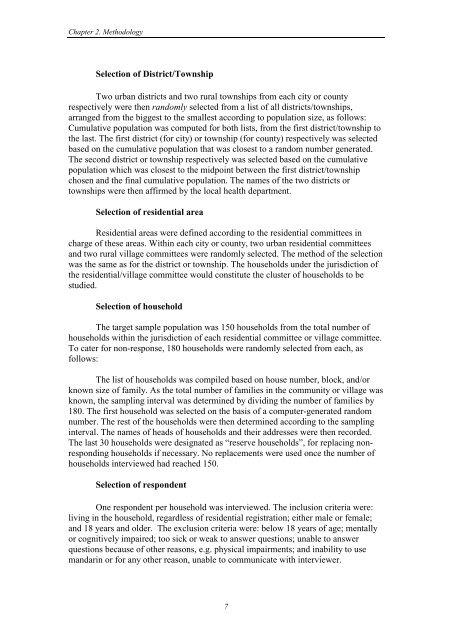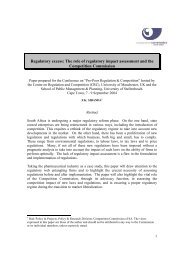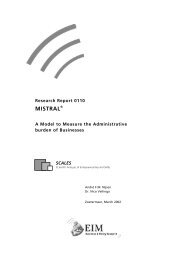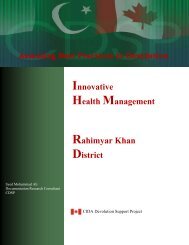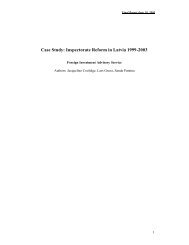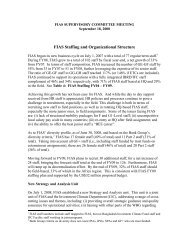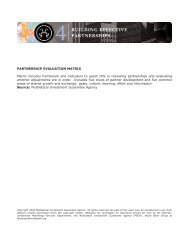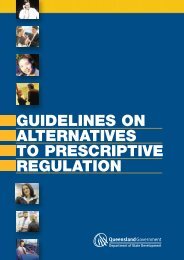The Role and Scope of Private Medical Practice in China
The Role and Scope of Private Medical Practice in China
The Role and Scope of Private Medical Practice in China
Create successful ePaper yourself
Turn your PDF publications into a flip-book with our unique Google optimized e-Paper software.
Chapter 2. Methodology<br />
Selection <strong>of</strong> District/Township<br />
Two urban districts <strong>and</strong> two rural townships from each city or county<br />
respectively were then r<strong>and</strong>omly selected from a list <strong>of</strong> all districts/townships,<br />
arranged from the biggest to the smallest accord<strong>in</strong>g to population size, as follows:<br />
Cumulative population was computed for both lists, from the first district/township to<br />
the last. <strong>The</strong> first district (for city) or township (for county) respectively was selected<br />
based on the cumulative population that was closest to a r<strong>and</strong>om number generated.<br />
<strong>The</strong> second district or township respectively was selected based on the cumulative<br />
population which was closest to the midpo<strong>in</strong>t between the first district/township<br />
chosen <strong>and</strong> the f<strong>in</strong>al cumulative population. <strong>The</strong> names <strong>of</strong> the two districts or<br />
townships were then affirmed by the local health department.<br />
Selection <strong>of</strong> residential area<br />
Residential areas were def<strong>in</strong>ed accord<strong>in</strong>g to the residential committees <strong>in</strong><br />
charge <strong>of</strong> these areas. With<strong>in</strong> each city or county, two urban residential committees<br />
<strong>and</strong> two rural village committees were r<strong>and</strong>omly selected. <strong>The</strong> method <strong>of</strong> the selection<br />
was the same as for the district or township. <strong>The</strong> households under the jurisdiction <strong>of</strong><br />
the residential/village committee would constitute the cluster <strong>of</strong> households to be<br />
studied.<br />
Selection <strong>of</strong> household<br />
<strong>The</strong> target sample population was 150 households from the total number <strong>of</strong><br />
households with<strong>in</strong> the jurisdiction <strong>of</strong> each residential committee or village committee.<br />
To cater for non-response, 180 households were r<strong>and</strong>omly selected from each, as<br />
follows:<br />
<strong>The</strong> list <strong>of</strong> households was compiled based on house number, block, <strong>and</strong>/or<br />
known size <strong>of</strong> family. As the total number <strong>of</strong> families <strong>in</strong> the community or village was<br />
known, the sampl<strong>in</strong>g <strong>in</strong>terval was determ<strong>in</strong>ed by divid<strong>in</strong>g the number <strong>of</strong> families by<br />
180. <strong>The</strong> first household was selected on the basis <strong>of</strong> a computer-generated r<strong>and</strong>om<br />
number. <strong>The</strong> rest <strong>of</strong> the households were then determ<strong>in</strong>ed accord<strong>in</strong>g to the sampl<strong>in</strong>g<br />
<strong>in</strong>terval. <strong>The</strong> names <strong>of</strong> heads <strong>of</strong> households <strong>and</strong> their addresses were then recorded.<br />
<strong>The</strong> last 30 households were designated as “reserve households”, for replac<strong>in</strong>g nonrespond<strong>in</strong>g<br />
households if necessary. No replacements were used once the number <strong>of</strong><br />
households <strong>in</strong>terviewed had reached 150.<br />
Selection <strong>of</strong> respondent<br />
One respondent per household was <strong>in</strong>terviewed. <strong>The</strong> <strong>in</strong>clusion criteria were:<br />
liv<strong>in</strong>g <strong>in</strong> the household, regardless <strong>of</strong> residential registration; either male or female;<br />
<strong>and</strong> 18 years <strong>and</strong> older. <strong>The</strong> exclusion criteria were: below 18 years <strong>of</strong> age; mentally<br />
or cognitively impaired; too sick or weak to answer questions; unable to answer<br />
questions because <strong>of</strong> other reasons, e.g. physical impairments; <strong>and</strong> <strong>in</strong>ability to use<br />
m<strong>and</strong>ar<strong>in</strong> or for any other reason, unable to communicate with <strong>in</strong>terviewer.<br />
7


